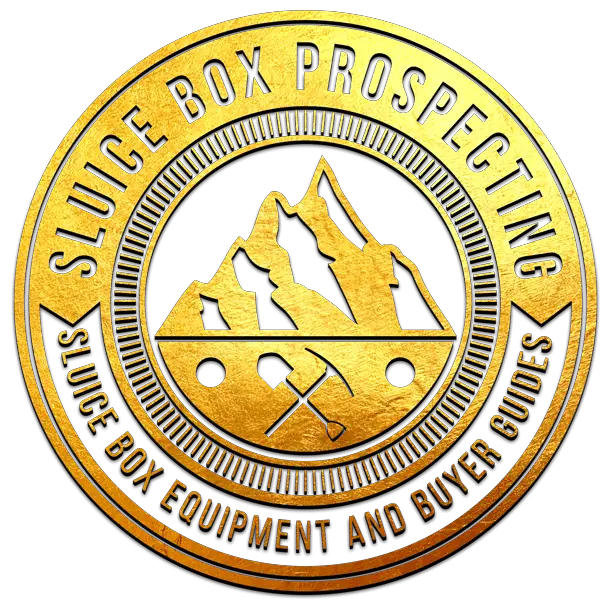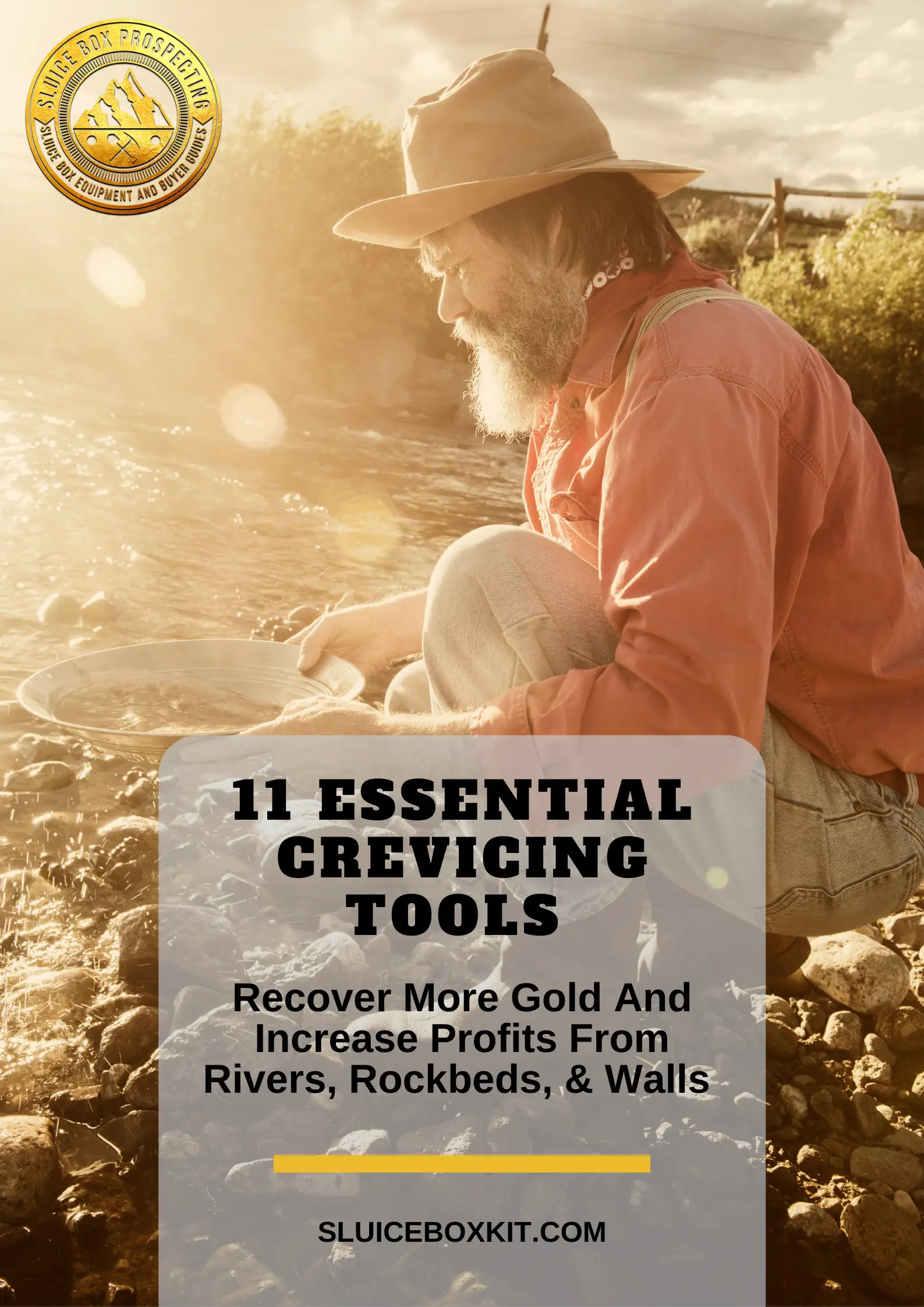Crevicing for gold can be very profitable when done correctly, which may wonder what crevicing tools are best for procuring gold with this method. The right combination of tools and good techniques can expedite the prospecting process and increase your success rate.
Generally, gold crevicing tools and kits will include the following items:
- Digging and scooping tools
- Prying tools
- Storage container
Other tools and devices are helpful to ensure that you get as close to your target as possible in a short amount of time.
To learn more about gold prospecting and the crevicing tools needed to get the job done, continue reading this article for information to help increase your profits.
Essential Crevicing Tools Needed For Efficiently Prospecting Gold
Already-made crevicing tool kits are available online; however, purchasing quality items individually that are dependable and stand the test of time is often more resourceful.
Often tools from home will work just as well as a store-bought kit. You may already have some crevicing tools available in your garage or basement.
A Storage Bottle or Other Sealed Container for Gold Nuggets
A storage bottle doesn’t have to be fancy. It would be best to have a sealed container to store any flakes or nuggets you may find on your hunt. An old used water bottle will suffice.
Bulb Snuffer Bottle
A snuffer bottle is a handy little tool to help suck small flakes out of your pan or help get small debris from crevices.

We recommend the Garrett Gold Guzzler Snuffer Bottle.
Flathead Screwdrivers of Varying Sizes
Flathead screwdrivers are convenient as they can fit in small spaces and be used to pry as well as dig and scrape debris out of your way.
Gloves For Prospecting & Metal Detecting
It is an excellent idea to bring along a good pair of work gloves as you will be digging with your fingers quite a bit, and by the end of the day, your fingertips will be very sore.
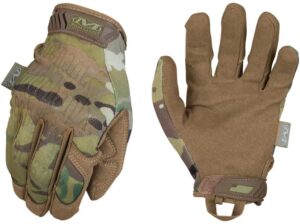
Our favorite pair is the Mechanix Wear: MultiCam Tactical Work Gloves.
Gold Pan
You will need a gold pan to sift the sediment from the bottom of river beds to see any gold.
To find a gold pan to work with your other crevicing tools, check out the post: The Top 5 Best Gold Pan Options With Reviews And Buying Guide.
Hammer and Chisel
Prospectors use hammers and chisels to break up and remove smaller rocks that may be blocking the bottom of the aperture.
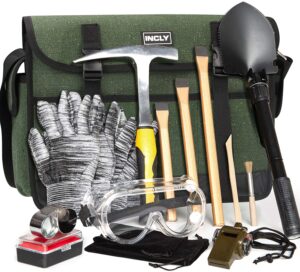
We recommend the INCLY 15 PCS Geology Kit.
Hand Trowel
Helpful for clearing the junk debris out of the way so you can get to the good stuff at the bottom of the bedrock.
Heavy-duty Knife
Helpful for cleaning between rocks and prying and cutting any wild weed growth that may be in the way.
Pry Bars
One of the handiest crevicing tools for removing smaller rocks that have become wedged between the crevices in the bedrock.
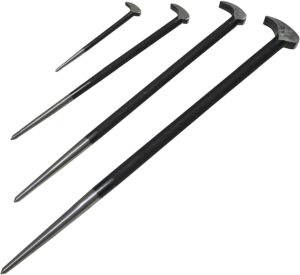
One of the best pry bars set available is the K Tool International Pry Bar Set.
Spoons of Varying Sizes
In addition to a hand trowel, spoons in various sizes are super handy as you can get into smaller cracks and clear more debris away.
Tweezers
Tweezers are necessary crevicing tools useful for picking fine gold flakes and nuggets out of the pan or procuring something from a crevice.
If you’re ready to get serious about prospecting for gold, there are other pieces of equipment to pair with your crevicing tools:
- Gold Detectors
- Pinpointers
- Headphones
You can also check out the post: 15 Essential Prospecting Hand Tools To Help Find More Gold for other prospecting hand tools.
If you are new to crevicing, this section will briefly explain and the basics of how to crevice for gold successfully.
What is Gold Crevicing?
Gold Crevicing is a term that describes the action of searching the bedrock in creeks and rivers that are known to produce gold. The best time for gold crevicing is usually near the end of the summer and into the early part of autumn when the water is at its lowest point, exposing all of those potentially productive crevices.

How Do You Find Gold in Crevices?
Locating gold in crevices takes some skill. Although anyone can get lucky from time to time, there is a general rule of thumb when looking for cracks with the most potential.
When crevicing a river, it helps to look upstream and study the curvature of the rocks and how the water is flowing. You need to imagine the water being at least 15-30 feet over your head as it would be during its flooding season.
It helps to have a good understanding of geology and mineral recognition, and the dynamics of the river. If you have a good grasp of these concepts, locating a profitable crevice will take less time.
Where Are You Likely to Find Gold in the River?
Gold is typically not in the middle of the river where the water is rushing. Prospectors usually find deposits of gold downstream and along the sides, accumulating in the bedrock crevices.
Once you have located a crevice that looks promising, you begin by removing any lighter debris such as:
- Gravel
- Dirt
- Other sediment left behind by the river’s current
It may be necessary to remove smaller rocks that have become lodged in the crevice. In rocky terrain is where your hand tools will come into play.
Once you have wiggled, pried, and cleaned the rocks and loose gravel with your crevicing tools, the fun begins. You can now start to fill your gold pan with what is left in the aperture and see if your hard work has paid off.
Seasoned gold prospectors will recommend that you do not spend too much time in one crevice. If you do not see anything after one or two pannings, move on to a new location.
Research Successful Gold Crevices To Identify Areas To Search
Learning the history of areas can save you time and improve your payouts! One of the best ways to locate the gold is to research the area you plan on prospecting. Use google or the library to review old newspaper articles and stories of where other prospectors have found gold in the past can give you an excellent place to start.
Rather than wasting your time guessing where the gold is, put the effort in on the front end by taking a trip down memory lane and picking up others left off.
Part of that research will also provide insights and help you better understand what crevicing tools are needed while prospecting for gold.
Since you can’t go crevicing for gold without using a gold pan, the next section will briefly describe what panning is and what you need to be successful.
What is Gold Panning?
Panning is the oldest and least expensive method of prospecting gold. It is a method in which prospectors use a pan to separate the lighter debris from the gold by using water.
Gold is denser than gravel and other debris, so it sinks to the bottom of the pan. The unwanted material can be swished back into the river, leaving your reward at the bottom of the pan.
When panning for gold, you can keep it simple by just bringing your pan out, but it is best to use it with essential crevicing tools.
Using Crevicing Tools Requires Time And Patience
When crevicing or panning for gold, it pays to be patient. Not everyone has a knack for prospecting for gold, as it does require some knowledge of geology and other factors that come with time and experience.
Check your history books and speak with those who have experience in prospecting to learn tricks and methods from seasoned, so you can succeed without wasting too much time.
